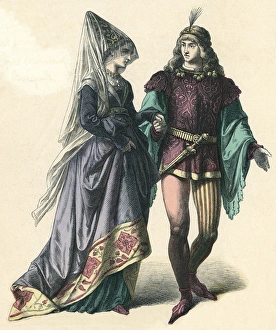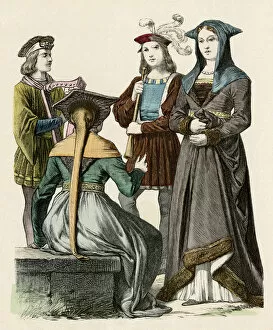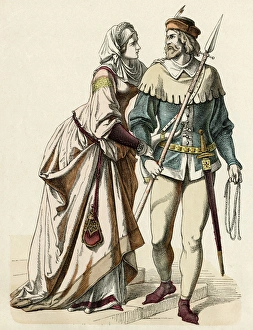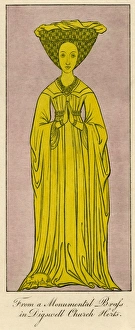Kirtle Collection
The kirtle, a timeless garment worn by Saxon ladies and women of nobility throughout history, holds a significant place in the world of fashion
All Professionally Made to Order for Quick Shipping
The kirtle, a timeless garment worn by Saxon ladies and women of nobility throughout history, holds a significant place in the world of fashion. From the intricate costumes depicted in Strutt's illustrations to the elegant Bourgogne C15 attire, this versatile piece has stood the test of time. Italian Costumes from the 15th century showcase how kirtles were an essential part of their wardrobe. French Costumes between 1460-80 also highlight its prominence during that era. Even English Costume in the mid-14th century portrays noblewomen donning this exquisite garment. Artists have immortalized various women wearing kirtles through their masterpieces. A young English woman from the 16th century is beautifully captured using pen and ink with watercolor on paper, showcasing her grace and elegance. An unknown woman painted around 1525 exudes confidence as she wears her kirtle with pride in oil on panel form. Not only did noblewomen embrace this style, but even Jane Shore, depicted in "The Penance of Jane Shore, " wore a kirtle as she sought redemption on canvas. The versatility of this garment is evident as it transcends social classes and tells stories through its presence. An Anglo-Saxon lady draped herself in a pink tunic or kirtle beneath a regal purple mantle, symbolizing power and femininity combined effortlessly. In contrast, men during the second half of the 15th century embraced demi-gowns with hanging sleeves while still incorporating elements inspired by these iconic garments. A portrait from 1560-9 showcases an unknown French noblewoman radiating sophistication while adorned in her meticulously crafted kirtle made for royalty. Throughout centuries and across different cultures, one thing remains constant: The allure and charm that emanate from those who wear a it can undeniable. Whether it be for ceremonial purposes or everyday wear, this remarkable piece continues to captivate and inspire fashion enthusiasts worldwide.

























